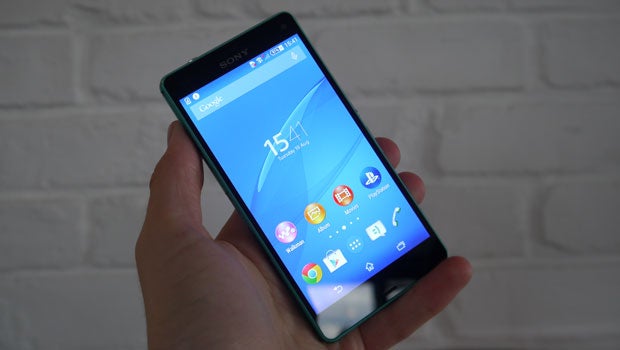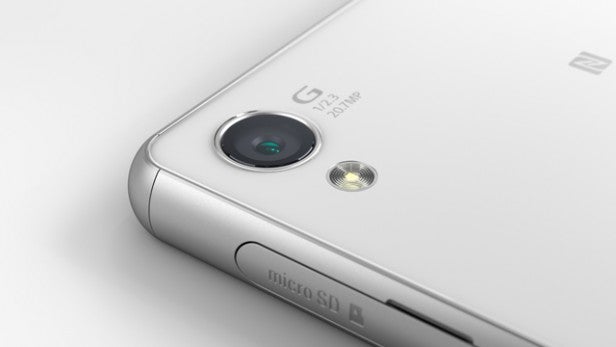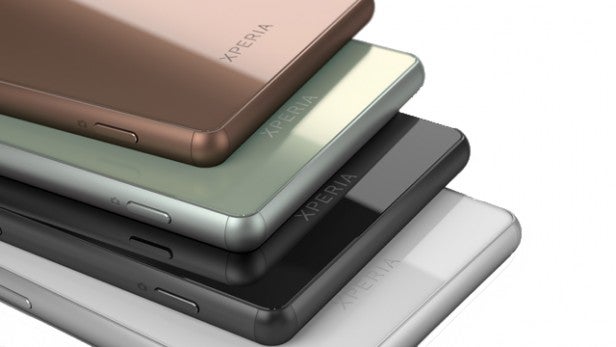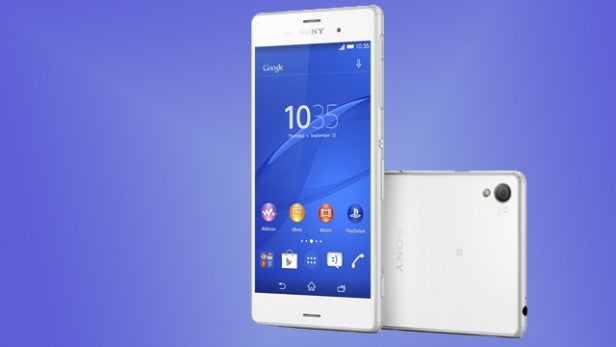Sony Xperia Z3 vs Z2

Xperia Z3 vs Z3: Generation Z
The next Sony Android flagship is official. It’s called the Sony Xperia Z3 and it continues the esteemed Z-series of Androids.
What we really want to know is – how does the new version differ from the Xperia Z2? Until now, the Z2 has been one of our favourite Android phones of the year. But does the Xperia Z3 blow it out of the water?
We’re going to take a closer look at how the two top Android phones compare. Is the Xperia Z3 really worth the upgrade?
Sony Xperia Z2 vs Z2 – Design
Xperia Z3: Black, white, copper, silver green,153g
Xperia Z2: Black, white, purple, 163g
Sony has not altered it design blueprint much in the Sony Xperia Z3. Like the Xperia Z2, the phone has a deliberately boxy shape that lets the front and back panels use flat panes of Gorilla Glass 3, giving both phones that signature Sony look.
The design is called Omnibalance, a term that applies to a whole load of Sony phones. What’s
it all about? It’s out to bring a bit more symmetry than you might get in other phones. The most obvious result in that the power button sits right in the middle of the right side of both the Xperia Z2 and Z3.
This makes it a bit easier to access – they’re both quite large phones, and on the brink of being a little hard to handle for those not used to phones of this size.
There are just a few little things to separate the two models. The Xperia Z3 is 10g lighter than the Xperia Z2, and slightly slimmer. It’s not the sort of difference you’d really notice if not directly comparing the two.
The Xperia Z3 also comes in some new colours. Both models are available in white and black, but where the Xperia Z2 offers a more colourful purple version, the Z3 comes in two more interesting shades – copper and silver-green.
Much like the move from the Xperia Z1 to the Z2, there’s not a huge design difference between the two latest models.

Sony Xperia Z2 vs Z2 – Water resistance
Xperia Z3: IP 65 and IP 68
Xperia Z2: IP 55 and IP 58
Weather resistance is a calling card of Sony’s top-end phones. Both the Xperia Z3 and Z2 use rubber-sealed flaps to keep the phone’s ports and insides free to water and dust.
Sony has made a slight change to the weather resistance. It doesn’t actually affect water resistance, but dust-proofing.
The Xperia Z2 is certified to the IP58 and IP55 standards, meaning it can withstand water jets and be submerged in water of 1.5m depth, and is dust proof.
The Xperia Z3 is certified to IP65 and IP68, offering the same level of waterproofing but an extra gradation of dust-proofing – it’s ‘dust tight’ rather than merely dust-proof. For most people it’s a semantic difference. If it’s really going to make a huge difference, you should probably get the duster out.
Sony Xperia Z2 vs Z2 – Screen
Xperia Z3: 5.2-inch 1080p IPS LCD Triluminous
Xperia Z2: 5.2-inch 1080p IPS LCD Triluminous
The displays of the Xperia Z3 and Z2 are very similar. They both use Sony’s Triluminous display tech, which is out to provide more vivid colours, and both have 5.2-inch screens of 1080p resolution.
What’s important to note here is that Sony has not made the jump to a QHD 2560 x 1,440 pixel, as seen in the LG G3. There’s a solid argument that such a high resolution wouldn’t really be beneficial in a phone screen of this size, though. 5.2 inches is big, but not that big.
You get pixel density of 424ppi in these screen, which is far higher than the 326ppi of the iPhone 5S – that’s the screen sharpness that the term ‘Retina’ was originally based on.
Don’t expect huge advances in this area, but the Xperia Z2 already offers great screen performance, with very good contrast and black levels for an LCD display – although naturally not ones that can quite compete with the Super AMOLED screen of the Galaxy S5.
What separates the Xperia Z2 and Z3 from other LCD screen phones is that they use blue backlight LEDs rather than white ones. It’s part of what helps Sony’s latest high-end phones provide great colours.

Sony Xperia Z2 vs Z2 – CPU, GPU and Power
Xperia Z3: 2.5GHz Snapdragon 801, 3GB RAM
Xperia Z2: 2.3GHz Snapdragon 801, 3GB RAM
Just as the Xperia Z3 shies away from making any big steps forward in screen technology, the phone doesn’t embrace the next generation of Qualcomm Snapdragon processors either. It has a Snapdragon 801 CPU, the same family used by the Xperia Z2.
There’s just one slight difference. Where the Xperia Z2 has the 2.3GHz version, the Xperia Z3 has the 2.5GHz one. This version was already around when the Xperia Z2 was originally announced, and features in the Samsung Galaxy S5.
The hardcore crowd is likely to be disappointed by this, as we’re just about to see high-end and mid-range processors embrace 64-bit architectures. The Snapdragon 801 is a 32-bit chipset.
It’s significant because Android L is to offer native 64-bit support, opening up potential for lots more number-crunching, as well as support for a greater stock of RAM. The Xperia Z3 has 3GB, much like the Z2.
Sony Xperia Z2 vs Z2 – Storage
Xperia Z3: 16GB, microSD
Xperia Z2: 16GB, microSD
Is the Xperia Z3 starting to sound like a stick-in-the-mud upgrade? That won’t change when you look at the phone’s storage.
Like the Xperia Z2, you get 16GB internal memory, and a microSD card slot to let you add to this. This is a perfectly fine setup, but means you’ll need to invest in a decent memory card if you want to store a lot of music or video on-board.
Sony Xperia Z2 vs Z2 – Software
Xperia Z3: Android 4.4 with Sony UI
Xperia Z2: Android 4.4 with Sony UI
Some of you might have expected the brand new Xperia Z3 to run the upcoming Android L version of Google’s OS. However, it’ll launch with good old Android 4.4, which has been around for a while now.
You’ll also see the usual Sony interface on-board, which means the Xperia Z3 will feel a good deal like the Xperia Z2 in use.
There are a few little extras, though. The Xperia Z3 has a special audio upscaler that aims to make your standard music tracks sound as good as ultra-high-resolution HD ones. The older Xperia Z2 might get this in an update, but we’re not 100 per cent sure on that yet.
Sony Xperia Z2 vs Z2 – Camera
Xperia Z3: 20.7MP, up to 12800 ISO, faster 25mm lens, better low-light
Xperia Z2: 20.7MP, 27MM lens
Sony has made a few changes to the Xperia Z3 camera, but the hardware remains comparable with the Xperia Z2’s. You get a 20.7-megapixel 1/2.3-inch sensor – much larger than the average.
The main changes are to the lens and the software engine behind the camera. The Xperia Z3 has a new, faster lens, although its focal length is a little bit less than the Xperia Z2’s – the new phone has a lens equivalent to 25mm, where the old model was roughly 27mm.
Sony has also packed new low-light skills into the Z3. It’s the first phone with ISO sensitivity that goes all the way up to 12800. That’s quite high for any small-sensor camera, let alone a phone.
The Xperia Z2’s sensitivity goes up to 6400, although it already has much better low-light coping skills than almost all other phones. Any photos shot at ISO 12800 would be extremely noisy, although we expect the Xperia Z3 will use pretty intense noise reduction to make shots a bit prettier to look at. This is something we’ll be examining much more closely at review.
Sony Xperia Z2 vs Z2 –Battery
Xperia Z3: 3100mAh
Xperia Z2: 3200mAh
There’s something very strange going on with the Xperia Z3 battery. It’s a tiny bit smaller than the Xperia Z2’s unit, with 3100mAh to the older phone’s 3200mAh.
However, Sony says that the phone will actually last for a good deal longer. It told us that while the Sony Xperia Z2 will last for around 1.5 days of a charge, the Xperia Z3 will last for a full two days. This is something of a holy grail among mobiles, and something that few achieve without using hardcore battery saving measures.
Sony has clearly worked extremely hard on the efficiency of its phones over the last six months, and it has paid off. If we’re to believe Sony, that is. We’ll have to see how the Xperia Z3 really performs when we get our review unit in. Stay tuned.
Early verdict
The Sony Xperia Z3 is a seriously conservative upgrade in many respect. There’s no 64-bit processor, a similar camera setup to last time and no serious screen upgrades.
In short, it’s nothing Xperia Z2 owners should worry about upgrading to. Sony needs to come up with the battery life goods it promises if the Xperia Z3 is to compete. We’ll be taking a more in-depth look at the new phone when our review unit comes in.



